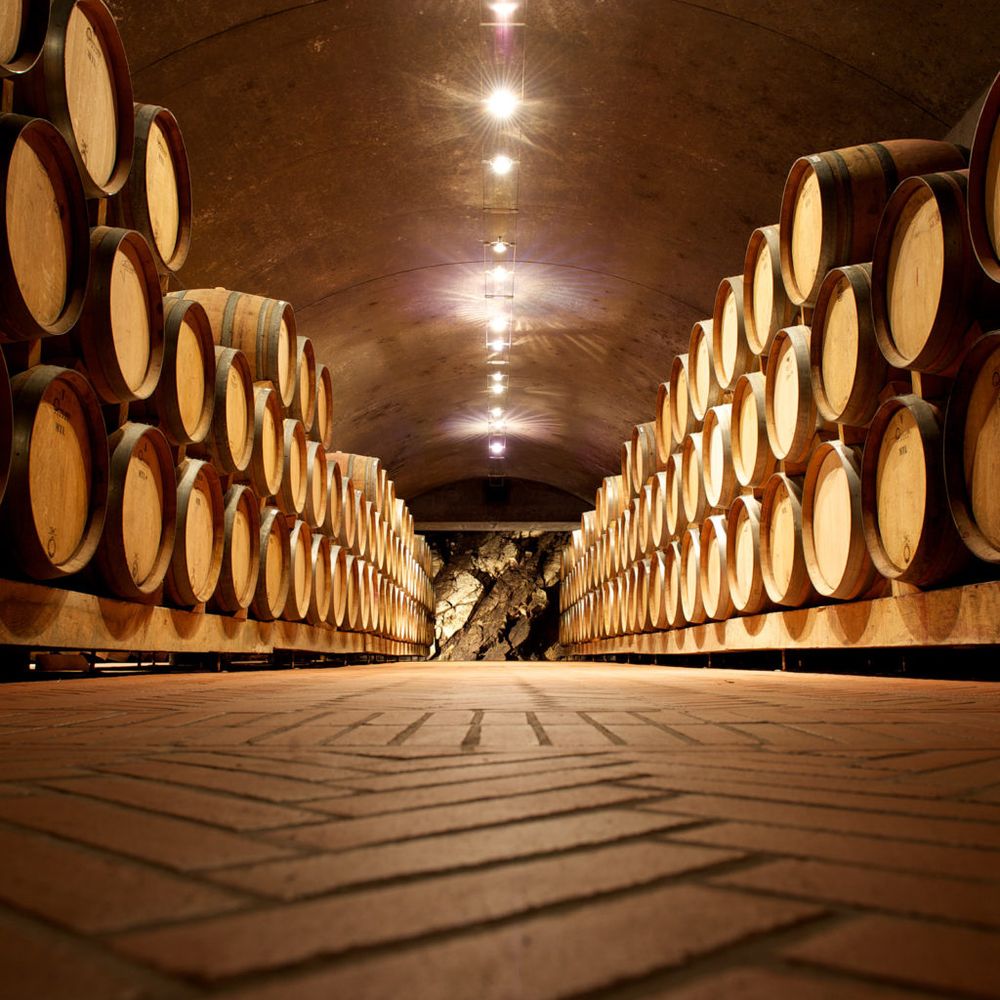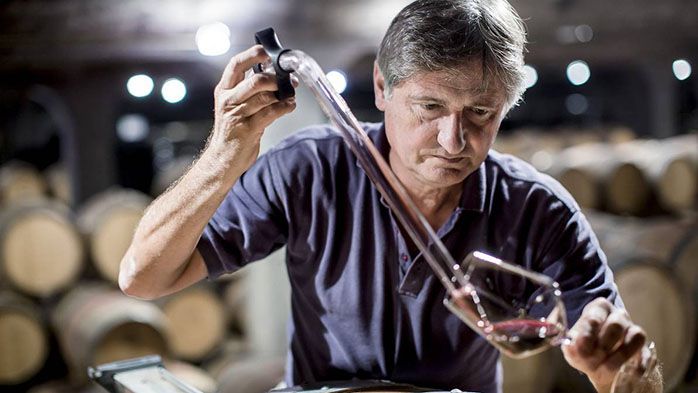“They say TCA affects only around 1.5% of bottles but we were finding that if we opened 100 bottles only a very few were absolutely outstanding,” says De Marchi
When this relentless pandemic is finally past, the wine trade will probably reflect who was better at keeping in touch with their customers and, by extension, in preparing the ground for the return of more normal times.
So far, the picture is decidedly mixed, unsurprisingly, given the unique weirdness of the situation in which the world and the trade finds itself. Many importers and generic bodies have over-emphasised online tastings at which MWs and sommeliers comment on randomly chosen wines and expect the audience – generally without the wines to hand themselves – to take their word for what they are like. Watching people enthuse about wine without being able to join them is well, pretty dull for most of us even when jollied-up by observations such as “this wine rocks!”
More canny operators are offering the wines to customers ahead of the online tasting – a good sales ploy if nothing else – but many have fallen foul of the current erratic delivery times.
The best policy seems to be to largely (but not entirely) eschew virtual tastings but, instead, focus on boosting consumer knowledge by having those closest to the wine talk about why it is so special. In this sense the Meet the Winemaker series run by Liberty Wines has been a real winner. In the last week of April it ran sessions by Antonio Braga, Sogrape’s chief winemaker at Quinta de Azevedo and Quinta da Romeira, who talked about Portugal’s rich grape variety heritage and by Emilien Boutillat from Piper-Heidsieck who highlighted the issue of climate change in Champagne. Amongst many speculations was the suggestion that producers could eventually start supplanting Chardonnay and Pinot Noir with rarer later-ripening local varieties Arbanne and Petit Meslier, which retain acidity well; this would essentially be a throwback to the 17thcentury, when Champagne was made from Gouais and Fromentau rather than today’s more familiar varieties.
Isole e Olena and the decision to use screw caps
Another successful Masterclass was held by Paolo de Marchi, owner of Tuscany’s Isole e Olena estate, speaking from his beautiful home in Isole.

Isole e Olena is situated in the western part of Chianti Classico, just north of the village of Castellina. Its 45 hectares of vineyard are situated between 350 – 450 metres above sea level, and are planted primarily on galestro soil.
The last time I spoke to Paolo in the flesh was at the Liberty Wines’ tasting back in January – which now seems like another age. However, he was looking pretty good under lockdown, perhaps because he was focused on this iconic estate’s most iconic wine Cepparello, made from the best grapes but – bizarrely – not allowed to call itself a Chianti Classico despite being made in the heart of that DOCG region. The original reason is typically Italian: because the wine is made from 100% Sangiovese grapes it didn’t qualify under the Consorzio’s original rules because they required that other varieties have to be added, including local native varieties and in some cases a smidge of Merlot or Cabernet. Now all would be fine if it weren’t for the fact Paolo has done something else that puts him beyond the DOCG pale: since 2005 he has been putting a proportion – around 15% – of Cepparello under screw cap/stelvin. This is a no-no across much of DOCG Italy – although is beginning to change most notably in Soave – but is virtually unprecedented in Chianti Classico where cork is king.
De Marchi said he came around to screw caps after realising that the quality of cork in some cases just wasn’t up to it, something that obviously felt pretty grievous when it was undermining the quality of the estate’s best wine: Ceparello comes from grapes grown in the best galestro soil at some 450 metres above sea level in vineyards brushed by sea winds and spends 18 months in barrique before bottling.

The name ‘Isole e Olena’ came about in the 1950s when two adjoining estates, ‘Isole’ and ‘Olena’, were purchased by the De Marchi family and combined to form one.
“We were finding a lot of green tannins were given off by cork. Some bottles just weren’t as good as they could be – not necessarily oxidised or suffering TCP but just not quite right. We felt screw caps could be the answer,” he says, admitting that a trial with diem glass-stoppers didn’t go well after problems with the silicone seal, which in some cases appeared to dry out.
De Marchi has since had 12 vintages of Cepparello under screw cap and cork – 2005-2106 – and also uses them for his other high end IGT wines including the delicious, wonderfully rounded Collezione Privata Chardonnay (currently on the 2018 vintage) a third of which is under screw cap. He is happy with the way things have worked out because the result has been more consistent wines.
“They say TCA affects only around 1.5% of bottles but we were finding that if we opened 100 bottles only a very few were absolutely outstanding. You would have some that were good or pretty good, a few that were OK and a few not so great. As the saying goes, you don’t have an outstanding old wine, you just have outstanding bottles from the vintage in question. Before you open the wine, there is always a question about how it will be. With the screw cap, you can be guaranteed the wine remains as you want it to be, and there is consistency,” says De Marchi.
How about his customers? As you might expect, Italian restaurants refuse to take the screw-capped bottles as does the US although he says this is starting to change. The most enthusiastic screw cap markets have been in Australasia and the UK, where it accounts for 40% of the Cepparello sold. And he says people hitherto resistant to screw caps are coming around to them.
So what does a comparative tasting of the two 2016 wines reveal?

The wine with natural cork is a classic, already quite evolved despite its youth, with lots of dark and red berry fruit showing and the 15% alcohol not apparent at all: unlike heftier Sangiovese from, say, Panzano this is almost delicate despite being only 10 kilometers or so as the crows flies, although the colour is very deep, dark red. The screw cap wine shares those characteristics but feels somehow more immediate, fresher perhaps, certainly on the first day of tasting, with perhaps some more tobacco and blackcurrant characteristics evident, maybe more vanilla in the mid-palate.
De Marchi says the 2016 is one of his favourite vintages but which closure does he prefer? He says both, applauding the natural cork for encouraging and enabling more evolution over time but the screw cap for ensuring more consistency. Power and balance – of acidity and tannins – and also weight are what are needed for a classic Cepparello and these wines have that in spades, with freshness provided by the vineyards relative proximity to the Mediterranean, benefitting from night-time sea breezes.
In the end, I suspect, it comes down to individual preference; some people, including indeed David Gleave MW, Liberty Wines managing director, make no secret of their preference for screw caps, although it imports the wine with both closures. The sense I get is that over time, and given the greater evolution that will happen with the natural cork you will eventually get two quite different wines from the same vintage and vineyard, even though everything about them – save the method of closure – is the same.
Two eventually distinct wines from the same vintage of the same iconic wine: sounds like a salesman’s dream. Certainly it’s another reason to embrace this unforgettable wine.









































